

|


|
|
1/8 Scale Electric Buggy:
Jamara Ultra E-Brushless - 056701
|
Manufactured by Hong-Nor and distributed by Jamara circa 2010, the 4WD Ultra-E Brushless Buggy - # 056701 - came RTR with a brushless motor, ESC and radio system.
The model is shaft driven, on an alloy plate chassis, with 3 x gear type differentials, coil spring over oil filled dampers, anti roll bars, rear dogbones, with front CVA universal joint drive-shafts and a full set of ball bearings.
This model was also distributed in the USA by Ofna Racing as the Ultra-LX-1e.
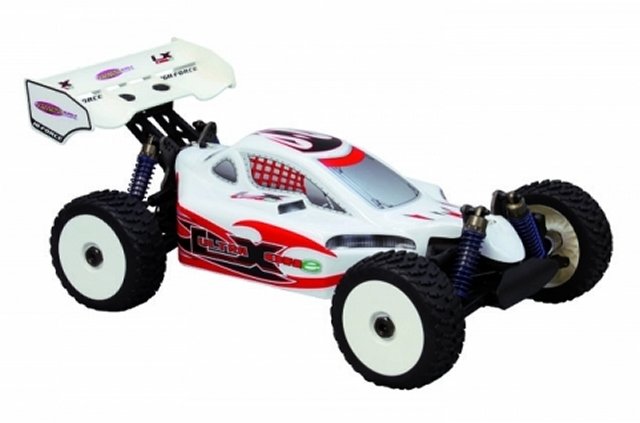
To race the Jamara Ultra E-Brushless, you need to tweak and adjust all you can to give your car improved handling, stability and grip to ease around the curves and keep you on the track. One little setting change can transform your car into a world beater. Just follow our chart to attain the most favourable Set-up to suit your particular needs on any track.








|
|
|

★ Jamara Ultra-E Brushless ★
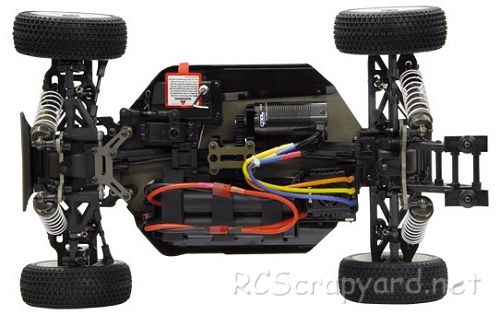
★ Jamara Ultra-E Brushless Chassis ★
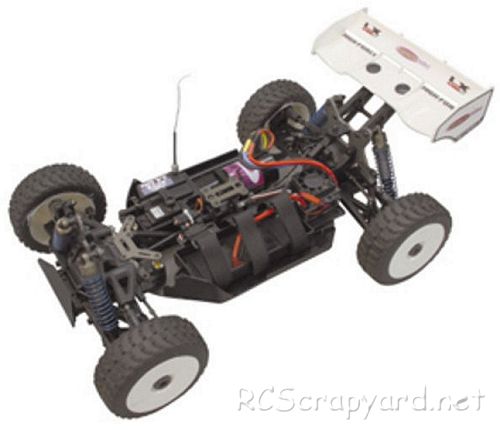
★ Jamara Ultra-E Brushless Chassis ★
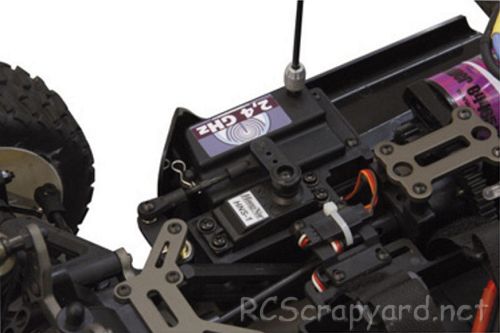
★ Jamara Ultra-E Brushless Chassis ★
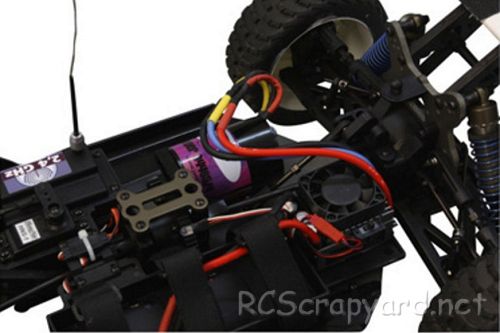
|
Buying a Used Jamara Ultra E-Brushless Buggy (and What to look for)
Make a General Visual Inspection
Check the Body-Shell
If the body shell of your Jamara Ultra E-Brushless is broken, ripped or damaged in any way, this can be easily repaired with rubber solution glue. Also, for added protection and if available for your Ultra E-Brushless model, fit an under guard to stop dirt and gravel entering the chassis. Drive Shafts and Turnbuckles
Examine the Drive System
The gearbox of your used Buggy should be opened up to check for gear wear and lubrication. A thin coat of grease is often used on internal gears and although this is fine for basic running around on the back yard, if you intend to race your Buggy at a higher level, this should be removed and replaced with racing oil (ZX1 or Teflon Oil). Of course, this should be reapplied after each race meeting. Pinions and Spur Gears
Don't Neglect the Ball-Joints
Ball joints always cause problems. For top level Electric Buggy racing, the plastic ball connectors should be checked and if deemed necessary changed after every meeting. A simple thing like a loose fitting connector popping off could easily end your race, so better safe than sorry. Steering Servo and Servo-Saver
Stabilizers
If body roll on your Jamara Ultra E-Brushless is a problem, handling can be improved with the use of stabilizers, anti roll or sway bars, stiffer tuning springs and, or, thicker silicone oil in the dampers. Don't Forget those Bearings
▼ Scroll Down for More Articles and Advice ▼
Or, check out our RC Model Car Setup Guide
|
|
Manufacturers and Brands Catalogued, Listed and Reviewed by RC-Scrapyard.
At present, the RC Model Manufacturers, Brands and Distributors covered by us are: ABC Hobby, Academy, Acme Racing, Agama Racing, Amewi, Ansmann Racing, ARRMA, Team Associated, Atomic RC, Axial, AYK, Bolink, BSD Racing, Capricorn, Carisma, Carson, Caster Racing, Cen, Corally, Custom Works, Durango, Duratrax, ECX - Electrix, Exceed RC, FG Modellsport, FS-Racing, FTX, Fujimi, Gmade, GS-Racing, Harm, HBX, Helion, Heng Long, Himoto Racing, Hirobo, Hitari, Hobao, Hong-Nor, Hot Bodies, HPI, HSP, Intech, Integy, Jamara, JQ Products, Kawada, Kyosho, Losi, LRP, Maisto, Mardave, Marui, Maverick, MCD Racing, Megatech, Mugen, New Bright, Nichimo, Nikko, Nkok, Ofna, Pro-Pulse, Protech, PTI, RC4WD, Redcat Racing, RJ-Speed, Robitronic, Schumacher, Seben, Serpent, Smartech, Sportwerks, Step-Up, Tamiya, Team-C Racing, Team Magic, Thunder Tiger, Tomy, Top Racing, Traxxas, Trinity, Tyco, Vaterra RC, Venom, VRX Racing, WLToys, X-Factory, Xmods, Xpress, Xray, XTM, Yankee RC, Yokomo, ZD Racing and Zipzaps. |
|
Hints, Tips and Information
Battery Connectors
Over the years I have been racing radio controlled model cars of all descriptions, I have tried a number of different connectors for my batteries.
|
|
Hints, Tips and Information
Damper Pistons
When you first build your RC model, you will sometimes find that there are a number of different pistons in the kit, with varying numbers of holes or hole sizes in them. Generally, the manufacturer will suggest one particular piston in the car manual, and may provide you with a mid range oil weight, but depending on the type of terrain you intend to race your model, their suggestion may not be the best for your needs. |
|
RC Models:
|
Radio & Motors: |
Other
Accessories: |